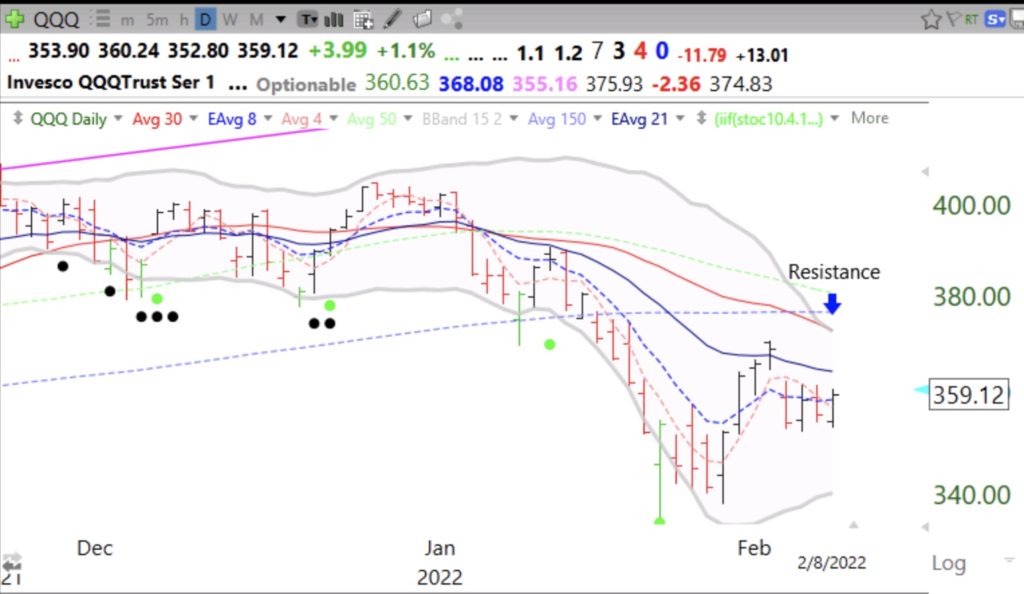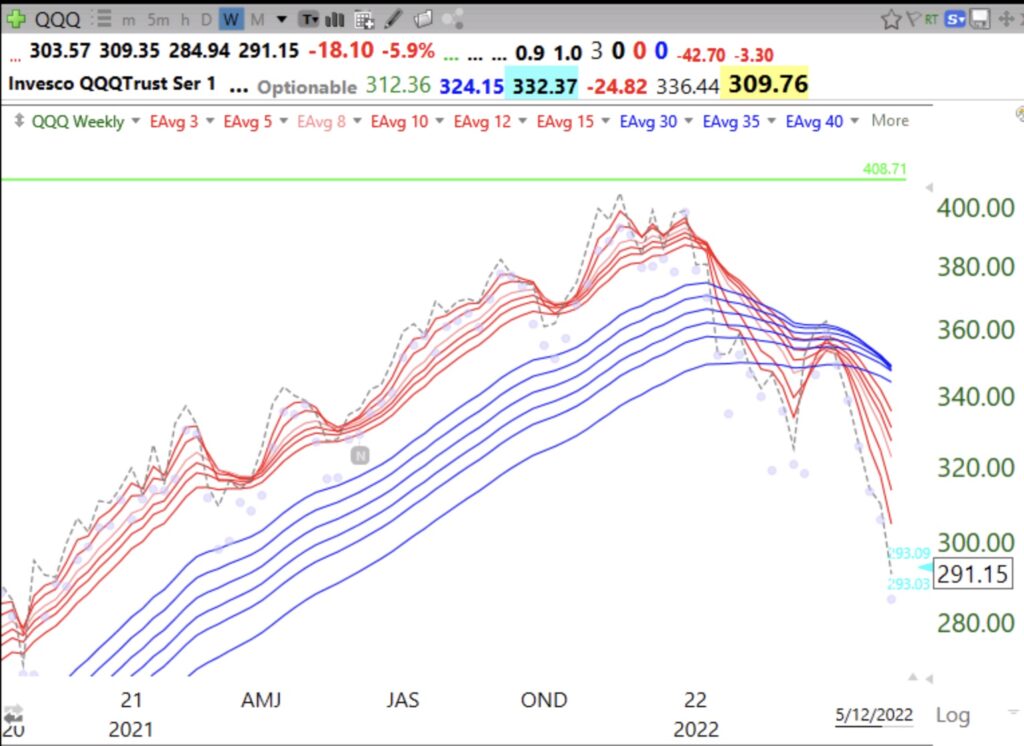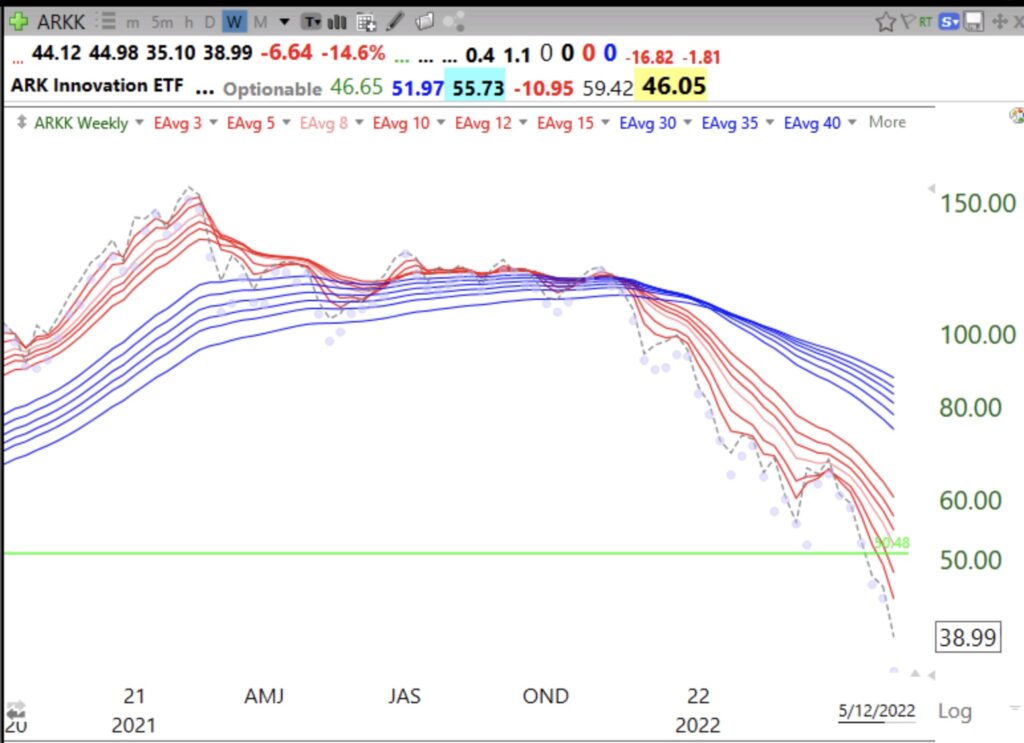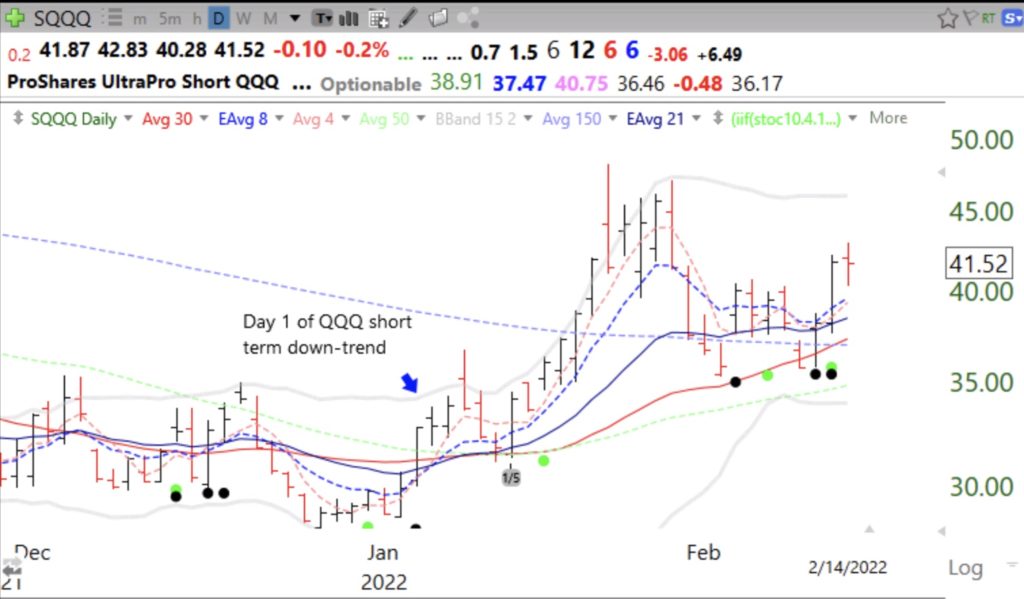I have the 15.2 daily Bollinger Bands drawn on all of my daily charts. It is basically a confidence interval drawn 2 standard deviations above and below the 15 day moving average of price. According to John Bollinger, about 90% of prices should remain within the 2 bands when he used a 20.2 setting. I use 15.2 as settings because they work for me. Many bounces occur off of the lower band and sometimes a rise will stop or hesitate near the upper band. On January 24 when the recent decline ended, and at three prior times (designated by green price bars) note that the price bar was way below the lower band and then closed back above it. I call this a Bollinger Band bounce.
In addition, the Bollinger Bands are now forming a pinch with each band moving towards the other one. A pinch usually leads to a big move up or down. One does not know in advance which way the stock or index will break. So we wait. I placed an arrow on this chart at 372, right where the upper band is now. The upper band is also up against the critical 30 day moving average. We need to see if QQQ stops at the upper band and begins to decline or breaks out, causing the upper band to rise. Or will the pinch continue developing? I find daily 2.15 Bollinger Bands to be very helpful for timing buys and sells. Find more details on them here.
By the way, last Sunday night I listed 13 promising stocks from my IBD/MS watchlist that reached an ATH (all-time-high) last week. All but one of them are higher today, some by a lot. Remember KO and HSY? Go back and check them out yourself. Buying stocks at ATH is the way to go. I don’t buy stocks that are way down from their peaks until they break above their former peaks (GLB). The same scan finds 6 companies tonight: HSY, MCK, ACGL, ECPG, ABC and MS. Whether these rise will likely depend on how QQQ resolves. Remember, these are for illustrative purposes, do not buy these stocks unless you research them and they meet your own setup criteria. It will be interesting to see if they do as well as Sunday’s list. The stock market is such an amazing intellectual puzzle…




